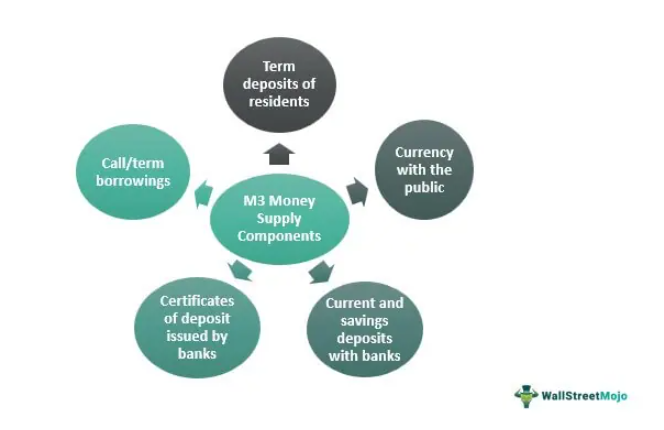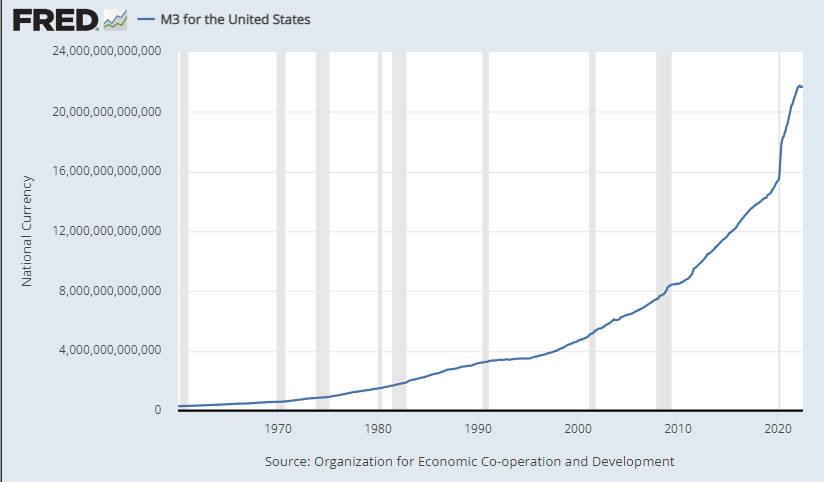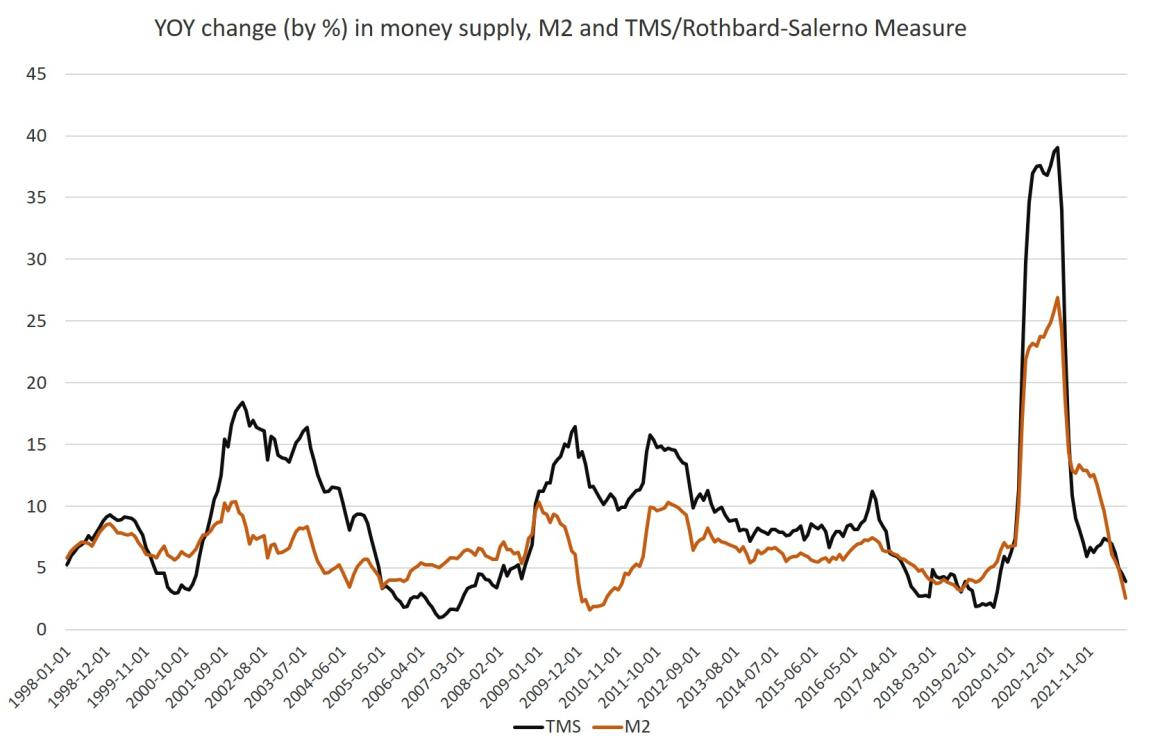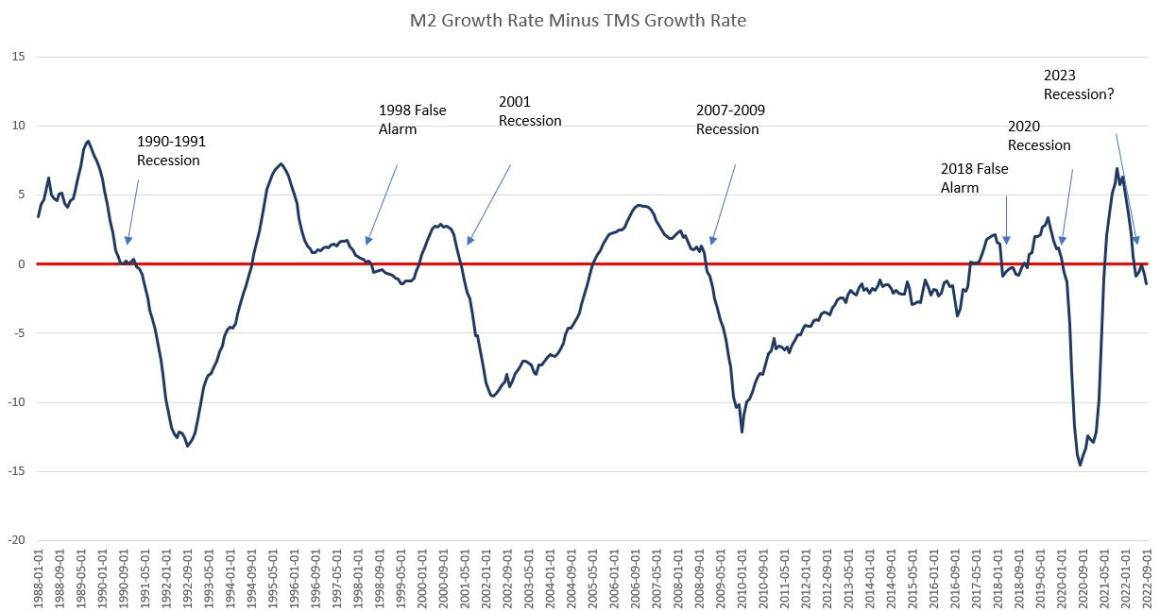There’s a new Recession Alarm! Money Supply Growth can have a major influence on the state of the economy. When the FED is pumping and the money supply is growing, Woo Hoo, it’s happy days, but when the flow dries up, the economy goes into a tailspin. As we have repeatedly implied, via the FED’s massive Quantitative Easing, the money supply has grown exponentially over the last decade.
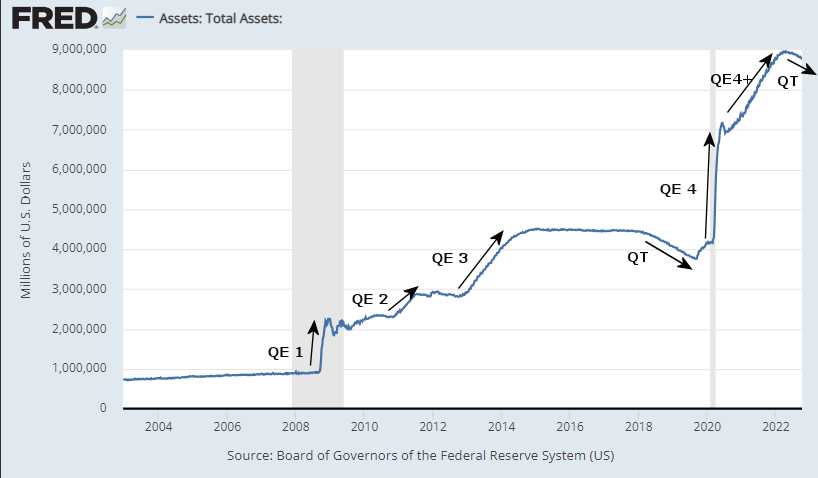 But today, let’s look at the M3 money supply itself. The M3 money supply is a broad measure of money, including M2 plus much more. It is an indirectly derived measure of the supply of money which includes currency in circulation, checking and savings deposits, certificates of deposit, term deposits, call/term borrowings from ‘non-depository’ corporations by the banking system; and ‘Other’ deposits with the central bank.
But today, let’s look at the M3 money supply itself. The M3 money supply is a broad measure of money, including M2 plus much more. It is an indirectly derived measure of the supply of money which includes currency in circulation, checking and savings deposits, certificates of deposit, term deposits, call/term borrowings from ‘non-depository’ corporations by the banking system; and ‘Other’ deposits with the central bank.
Looking at the chart of M3, we can see its exponential growth. It looks pretty much like a rocket taking off. So it is no surprise that we are experiencing massive inflation. The only “surprise” is why it took so long to get here. But if we look closely at the last few months, we can see that the growth has abruptly stopped.
In today’s article, Ryan McMaken will address what this means for the economy now. ~Tim McMahon, editor
Money-Supply Growth Fell in September to a 37-Month Low
By Ryan McMaken
Money supply growth fell again in September, dropping to a 37-month low. August’s drop continues a steep downward trend from the unprecedented highs experienced during much of the past two years. During the thirteen months between April 2020 and April 2021, money supply growth in the United States often climbed above 35 percent year over year, well above even the “high” levels experienced from 2009 to 2013.
During September 2022, year-over-year (YOY) growth in the money supply was at 3.92 percent. That’s down from August’s rate of 4.54 percent, and down from September 2021’s rate of 7.02 percent.
The growth rates during most of 2020, and through April 2021, were much higher than anything we’d seen during previous cycles, with the 1970s being the only period that came close. Since then, however, we have seen a fast fall from previous highs, and such rapid declines generally point to an economic contraction in the following months.
The money supply metric used here—the “true” or Rothbard-Salerno money supply measure (TMS)—is the metric developed by Murray Rothbard and Joseph Salerno, and is designed to provide a better measure of money supply fluctuations than M2. The Mises Institute now offers regular updates on this metric and its growth. This measure of the money supply differs from M2 in that it includes Treasury deposits at the Fed (and excludes short-time deposits and retail money funds).
In recent months, M2 growth rates have followed a similar course to TMS growth rates. In September 2022, the M2 growth rate was 2.52 percent. That’s down from August’s growth rate of 3.78 percent. September’s rate was also well down from September 2021’s rate of 12.88 percent.
Money Supply Growth Recession Alarm
Money supply growth can often be a helpful measure of economic activity, and an indicator of coming recessions. During periods of economic boom, the money supply tends to grow quickly as commercial banks make more loans. Recessions, on the other hand, tend to be preceded by slowing rates of money supply growth. However, money supply growth tends to begin growing again before the onset of a recession.
Another indicator of a recession appears in the form of the gap between M2 and TMS. The TMS growth rate typically climbs and becomes larger than the M2 growth rate in the early months of a recession. This occurred in the early months of the 2001 and the 2007–09 recession. A similar pattern appeared before the 2020 recession.
Notably, this happened again beginning in May this year as the M2 growth rate fell below the TMS growth rate for the first time since 2020. Put another way, when the difference between M2 and TMS moves from a positive number to a negative number, that’s a fairly reliable indicator the economy has entered into recession. We can see this in this graph:
In the two “false alarms” over the past 30 years, the M2-TMS gap reverted to positive territory fairly quickly. However, when this gap firmly enters negative territory, that is an indicator that the economy is already in recession. The gap has now been negative for 5 of the past 6 months. Moreover, the gap in September was -1.4, and there is only one case—1998—in more than 30 years during which the gap was greater than -1, and the US was not in recession.
Interestingly, this indicator also appears to follow the pattern of yield curve inversion. For example, the 2s/10s yield inversion went negative in all the same periods where the M2-TMS gap pointed to a recession. Moreover, the 2s/10s inversion was very briefly negative in 1998, and then almost went negative in 2018. This is not surprising because trends in money supply growth have long appeared to be connected to the shape of the yield curve. As Bob Murphy notes in his book Understanding Money Mechanics, a sustained decline in TMS growth often reflects spikes in short-term yields, which can fuel a flattening or inverting yield curve.
It’s not especially a mystery as to why short-term interest rates are headed up fast, and why the money supply is decelerating. Since January of this year, the Fed has raised the target federal funds rate from .25 percent up to 3.25 percent.
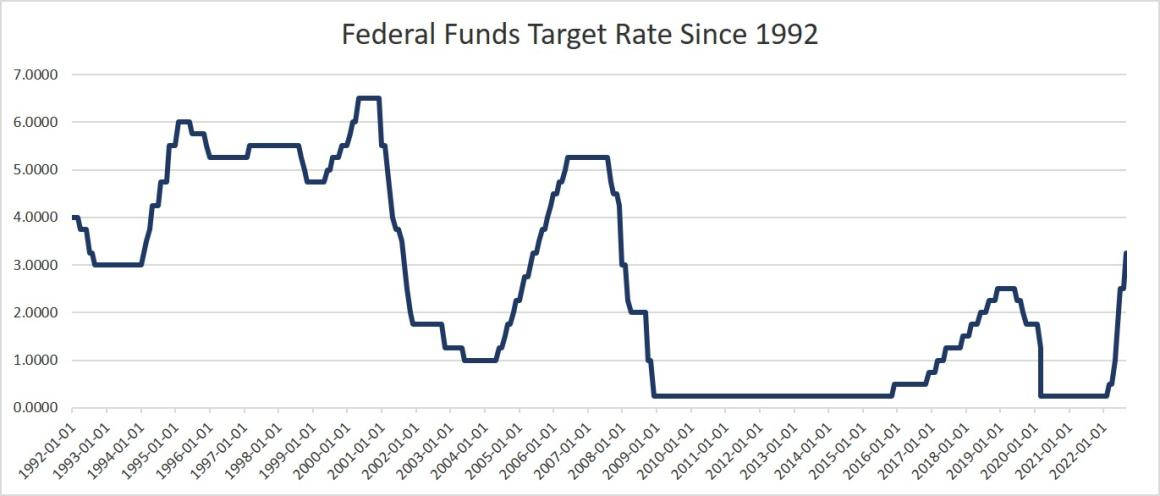
This article originally appeared here and has been reprinted under the Creative Commons License.
Ryan McMaken (@ryanmcmaken) is a senior editor at the Mises Institute. Ryan has a bachelor’s degree in economics and a master’s degree in public policy and international relations from the University of Colorado. He was a housing economist for the State of Colorado. He is the author of Commie Cowboys: The Bourgeoisie and the Nation-State in the Western Genre.
You might also like:

